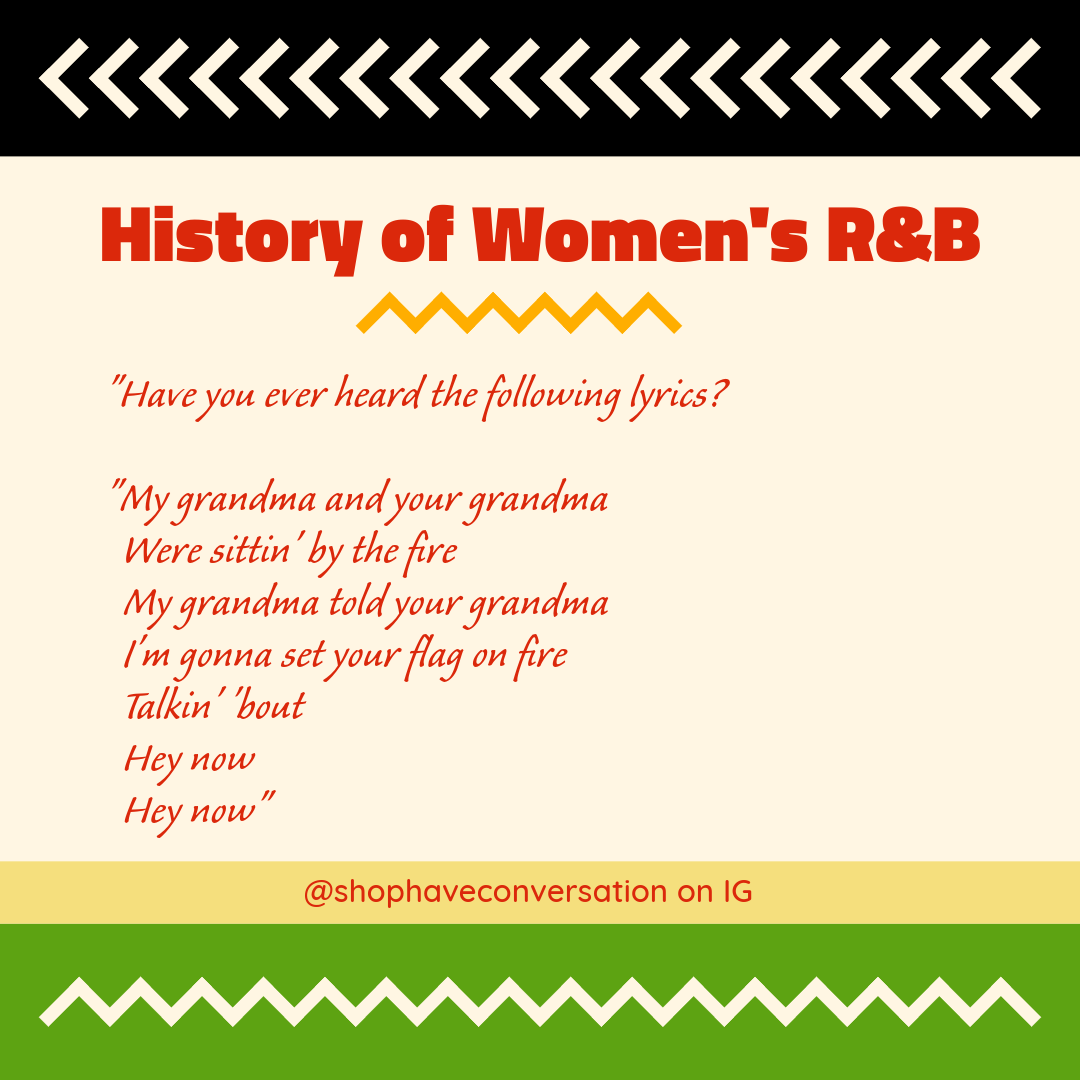As we delve into the history of women in the Rhythm and Blues genre, we must recognize the pioneering role of The Dixie Cups, a New Orleans women's vocal trio. Their 1964 release of "Chapel of Love" Was a watershed moment, catapulting the genre into mainstream awareness and even toppling the Beatles from their number-one position on the pop charts. Have you ever heard the following lyrics?
"My grandma and your grandma
Were sittin' by the fire
My grandma told your grandma
I'm gonna set your flag on fire
Talkin' 'bout
Hey now
Hey now"
These are the lyrics of their 1965 hit, 'Iko Iko,' originally released in 1954 by James' Sugar Boy' Crawford as 'Jack-A-Mo.' The song narrates the meeting of two groups of Mardi Gras Indians. While these songs gained popularity in the Pop genre, The Dixie Cups played a deliberate and unintentional role in introducing Rhythm and Blues to a broader audience.
As The Dixie Cups' popularity extended beyond the R&B genre, it's clear that the history of R&B is rich and diverse, both culturally and artistically. This diversity is a testament to that R&B is not a monolithic genre. When we listen to R&B music from the past, we can discern the myriad influences of the time. In the 1960s, amidst civil unrest and segregation, the music reflected the era's spirit. The artistry of that period directly addressed the political landscape of civil injustice, blending blues, swing, folk, and gospel, all of which are unique to African American culture.
The recent release of "Cowboy Carter" by Beyonce started the conversation of how country music originated under the umbrella of marginalized African American music of that era, as did one of the most notable repertoires of American popular genres we've known as rock 'n' roll. R&B catalyzed the development of the most famous American music we love today, parallel to the resettling of African Americans in inner-city areas surrounding World War I and World War II and the civil rights movement.
In the 1920s, a music marketing category called "race records" gave way to the materialization of promotional recordings by and for African Americans. Mamie Smith led the way with her smashing hit, "Crazy Blues," which had unmatched trading success. The "race records" category was a comprehensive approach for most African American music, including gospel, jazz, and blues, which further broke the barrier for early R&B women singers such as Ma Rainey, Alberta Hunter, Bessie Smith, and Ida Cox. Most of these women permeated their musical content with the sounds of the piano, wind instruments, banjo, horns, and percussion instruments.
As R&B continued through the 1960s and 70s with the luxurious sounds of legends such as Tina Turner, Aretha Franklin, and Diana Ross, coming into the 1980s, the once socially conscious lyrical content within the genre began to shift as a new era was approaching with powerhouse vocalists such as Chaka Khan and Whitney Houston along with the calming sounds of Anita Baker and Sade.
Whitney Houston's contributions to the R&B genre are undeniable. Although most of her music is more pop-ish today, the undertones of the genre were always there as she made her mark during the 80s and 90s while starring and belting notes in box office record-breakers such as The Bodyguard and The Preacher's Wife. Her popular hits, "I Have Nothing," "I Will Always Love You," "I Wanna Dance with Somebody," "Higher Love," and "Greatest Love of All," contributed to her best-selling music artists of all-time recognition.
The "Queen of Rock'n'roll, Tina Turner, knew what it was like to be one of the world's all-time best singers, songwriters, and actresses with her baritone melodic voice and over-the-top performances with the blow-out hair to match. Most of us know and love her hits such as "Proud Mary" and "What's Love Got to Do with It." Rest in peace to a legend with a music career covering six decades.
The culture will always revere the whispering sounds of Janet Jackson, who brought much revolution to the R&B genre. She imbued dance and pop while thrilling music lovers with stimulating performances, which assisted in laying the foundation of contemporary pop music.
The late "Queen of Soul," Aretha Franklin, got her start in the 1960s and became an iconic voice that seamlessly transcended R&B. Aretha mashed gospel, jazz, and R&B to create her signature sound, producing hits such "as I Say a Little Prayer," "Natural Woman," and "Respect."
Diana Ross became famous as the lead vocalist of the legendary Motown group The Supremes; however, her solo career was filled with many record-breaking hits like "Upside Down" and "Ain't No Mountain High Enough." In the 1980s, she released her praiseworthy albums Dianai, Why Do Fools Fall in Love, and Swept Away. To this day, she is one of the greatest divas in the music industry.
Indeed, we must mention the contributions of Philadelphia native Patti LaBelle, who produced consecutive hits in the 1980s, including "On My Own" and "Lady Marmalade." Remarkably, Patti released six albums in the 1980s, and with her career starting in the late 1970s, she's still performing today in the same key and throwing her high heels across the stage as she gives it her all each time she graces the stage.
As you can see, the early R&B girlies came out displaying what we call today "black girl magic," it didn't stop with the names mentioned above. There were so many other women such as Natalie Cole, Deniece Williams, Stephanie Mills, Regina Belle, Karyn White, Patti Austin, Sheila E, Cheryl Lynn, Cherrelle, Melba Moore, Phyllis Hyman, Stacy Lattisaw, Pebbles, Joyce Sims, Millie Jackson and Jody Watley who contributed to what appears to be a complex era in the music industry specifically with the creation of the R&B genre. Some would say black people not being a monolith gave way to the entanglement of classifying the genre while designing the blueprint of what we know the music industry to be today. We have the early R&B girlies to thank for the breadth of musical genres and award categories we celebrate today. Next, we'll unpack the evolution of women in R&B, so stay tuned.
Writer: Corey D. Rivers Jemison

